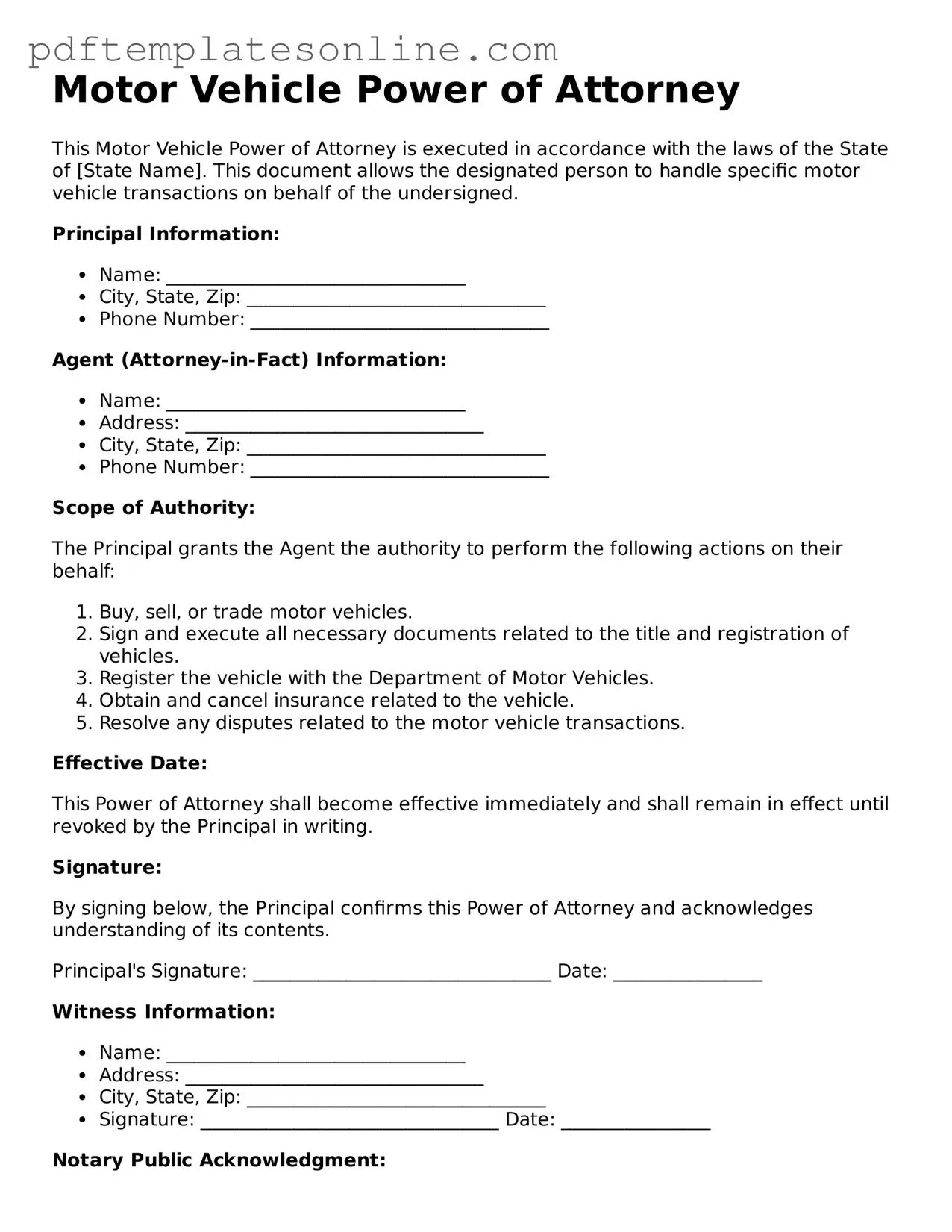When filling out the Motor Vehicle Power of Attorney form, individuals often make several common mistakes that can lead to delays or complications. One frequent error is failing to provide complete information. This includes not including the full name, address, and identification details of both the principal and the agent. Omitting any of these details can render the form invalid.
Another mistake is not signing the document correctly. The principal must sign the form in the designated area. If the signature is missing or does not match the name printed on the form, it may be rejected. In some cases, witnesses or notarization may be required, and neglecting these requirements can also invalidate the form.
People sometimes overlook the importance of specifying the powers granted to the agent. The form should clearly outline what the agent is authorized to do. Failing to be specific can lead to misunderstandings and limit the agent's ability to act on behalf of the principal.
In addition, individuals may forget to date the document. A missing date can create confusion about when the powers take effect. It is essential to include the date to ensure clarity regarding the timing of the authority granted.
Another common error is not keeping a copy of the completed form. After filling out the Motor Vehicle Power of Attorney, it is advisable to retain a copy for personal records. This can be helpful in case any disputes arise or if the agent needs to refer back to the document.
Sometimes, people fail to check the local requirements for the form. Each state may have specific rules regarding the execution of a Power of Attorney. Ignoring these can lead to complications, especially if the form is used in a jurisdiction with different regulations.
Lastly, individuals may neglect to communicate with their chosen agent about the powers granted. It is crucial that the agent understands their responsibilities and the specific tasks they are authorized to perform. Clear communication can prevent misunderstandings and ensure that the agent can effectively fulfill their role.
